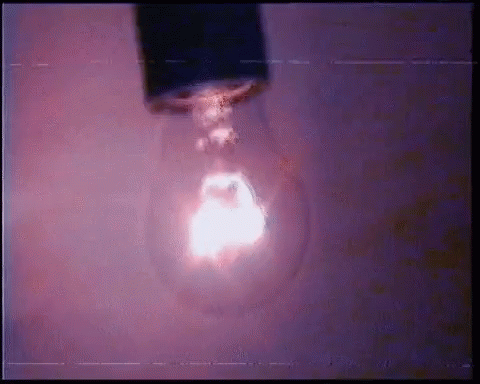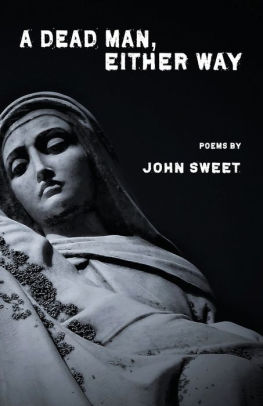Trump
is increasingly relying on white supremacist ploys to fire up his base as he
panics over his re-election chances
John
Haltiwanger
• Donald Trump in
recent days shared tweets depicting Black people as violent and asked why
people weren't protesting over it, which came amid nationwide demonstrations
over racism and police brutality.
• These tweets echoed the
rhetoric of white supremacists, and are part of a broader strategy from Trump
to exploit fear and prejudice as he fights to salvage his vulnerable reelection
campaign.
• Trump leaned on
racism and xenophobia to garner support during his 2016 campaign,
and he's employing a similar approach as the US gets closer to
Election Day.
With his reelection prospects dimming, Donald Trump has increasingly employed the
rhetoric of white supremacists in an effort to rile up his base and increase
divisions in the US.
On Monday night, Trump retweeted a video of a Black man punching
a white department store employee, apparently during rioting in June, stating:
"Looks what's going on here. Where are the protesters? Was this man
arrested?"
Earlier, Trump retweeted a video of a Black man shoving a white
woman into the side of a subway car that asked: "Where are the protests
for this?" In his tweet on the video, Trump said, "So terrible!"
The Washington Post reported this video appears to come from a 2019 subway
incident, for which the man was arrested.
These tweets came with the US in the midst of nationwide protests
against racism and police brutality, largely spurred by the disturbing death of
George Floyd at the hands of Minneapolis police. Floyd, a Black man, died after
a police officer knelt on his neck for roughly eight minutes.
Though the protests have zeroed in on systemic racism, they've
also served as a profound rebuke of Trump, who has made his disdain for the
demonstrators abundantly clear. Trump referred to the protesters as
"thugs" during his first rally in months in Tulsa, Oklahoma, on
Saturday.
It's a standard tactic of white supremacists to attempt to incite
fear based on the false premise that Black people harbor violent hatred of
whites. This white supremacist lie is often employed in an effort to deflect
from evidence-based discussions on systemic racism and state-sanctioned
violence against Black people and people of color.
In 2015, a white supremacist shot and killed nine Black people in
a church in Charleston, South Carolina. The shooter said he wanted to foment a
race war. Court testimony said that during the shooting he yelled: "Y'all
are raping our white women. Y'all are taking over the world."
With these inflammatory tweets, Trump borrowed from the ideology
and rhetoric of white supremacists, and it's part of a broader, divisive
strategy the president appears poised to accelerate as he panics over his grim
reelection prospects.
Trump is turning to
racism amid backlash over his botched response to coronavirus
In 2016, Trump also employed a white supremacist playbook,
stoking people's fears and biases in an effort to rally them behind his
campaign. Trump began his campaign by referring to Mexican immigrants as
rapists, drug dealers, and criminals. Among other blatantly racist and
xenophobic moments along the campaign trail, Trump would go on to call for a
ban on Muslims entering the US as he simultaneously depicted refugees as
terrorists, which he continued to do as president.
Fast-forward to 2020, and Trump is rapidly leaning into a
near-identical approach.
During his Tulsa rally, Trump referred to COVID-19 as the
"kung flu," which is part of the his racist effort to blame the
pandemic on China in order to distract from his own failings in responding to
the virus. He has ignored recommendations from the Centers for Disease Control
and Prevention to avoid rhetoric that stigmatizes certain groups, often
referring to COVID-19 as the "Chinese virus" or the "plague from
China."
In January, February, and even as late as March, Trump was
actually praising the Chinese government over its handling of the virus, which
originated in the Chinese city of Wuhan.
Trump's tone only shifted after cases began to spread at scale in
the US, and it became increasingly clear that his administration had failed to
adequately prepare for the outbreak.
Polling has repeatedly shown that Americans overwhelmingly
disapprove of Trump's handling of the virus.
As Trump has often done in the process of seeking to avoid
responsibility, the president found a scapegoat and portrayed COVID-19 as a
"foreign virus" that invaded the US from China.
Meanwhile, Asian-Americans have faced discrimination due in part
to the Trump's racist accusations.
Trump's white supremacist playbook also borrows from
authoritarianism
Experts and historians have warned that Trump's behavior in 2020
has increasingly mirrored that of authoritarians, and it is only set to become
worse if the president is left unchallenged.
"What we are seeing now is a disturbing preview of what will
likely be worse in the months ahead. He is clearly going to run a
scorched-earth election campaign laced with lies, conspiracy theories, racial
division, and even incitement of violence," Brian Klaas, a political
scientist at the University College London, told Insider earlier this month.
Last Thursday, Facebook took down dozens of ads put up by Trump's
reelection campaign that included a symbol once used by the Nazis to classify
or identify political prisoners in concentration camps.
The ads were part of Trump's efforts to blame isolated instances
of violence at recent protests on antifa, a loosely affiliated group of
left-wing anti-fascist activists. But there's little evidence to support this.
At the same time, Trump has praised law enforcement for violent crackdowns on
protesters.
Facebook and Twitter also within the past week removed a doctored
"racist baby" video shared by Trump after a copyright complaint from
the parents of one of the children in the clip. The doctored video made light
of racism, and depicted a Black baby and a white baby running down a sidewalk
with a fake CNN chyron: "Terrified toddler runs from racist baby."
And in the midst of the nationwide conversation on racism, Trump
has positioned himself firmly against those who wish to see monuments to the
Confederacy removed or renamed.
Indeed, a man who has repeatedly proclaimed his disgust for
losers has recently expressed fervent support for continuing to memorialize a
defeated, traitorous army that fought to perpetuate slavery. Along these lines,
at his rally in Tulsa on Saturday, Trump spoke of the need to "save your
heritage," echoing the language of neo-Nazis who often discuss the need to
fight to preserve their "white heritage."
None of Trump's behavior is coincidental
Trump's reelection campaign is in trouble. Multiple recent polls
have shown former Vice President Joe Biden, the presumptive Democratic
presidential nominee, with a double-digit lead over Trump. The former vice
president has also seen a huge uptick in financial support in recent weeks, and
is catching up on the president in terms of fundraising.
Between his botched response to the coronavirus pandemic, which
has led to over 120,000 confirmed fatalities in the US, and the nationwide
protests over racism that have morphed into an anti-Trump movement, his
approval numbers have also tanked in recent weeks. The most recent Gallup
polling put Trump's approval rating at an abysmal 39%.
Trump was also reportedly shocked and enraged over turnout at his
Tulsa rally. Roughly 6,200 people showed up to a stadium that can hold a little
over 19,000.
Trump is in panic-mode, and when fear sets in he resorts to what
he knows best: demagoguery.
It's an approach that worked for Trump in the past, and is
reminiscent of the "Southern strategy,"
which worked well for President Richard Nixon. But given
watershed moment the US experiencing, this game plan could now backfire on
Trump.
More Americans than ever say that racism is pervasive in their
country. The Black Lives Matter movement is now mainstream, and Trump is
swimming against the current of history. But all of this also might make Trump
more aggressive than ever as he fights for political survival. The past few
weeks have likely only been a sample of the ugliness to come as the US gets
closer to Election Day.
![Forum - Duelist - [3.4] Here comes the BOOM! - Crit Infernal Blow ...](https://acegif.com/wp-content/uploads/gif-explosion-36.gif)





















